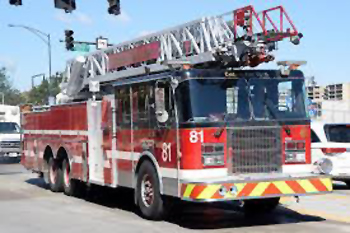
Introduction
The Great Chicago Fire remains one of the most devastating events in American history, occurring from October 8 to October 10, 1871. This catastrophic fire destroyed a significant portion of the city, reshaping the urban landscape and affecting thousands of lives. Understanding the causes, damages, and the subsequent reforms that followed the fire is crucial to appreciate Chicago’s resilience and development.
Background and Causes
The Great Chicago Fire started in a barn owned by Patrick and Catherine O’Leary, although the exact cause is still debated. It is believed that a cow may have knocked over a lantern, igniting the hay and triggering the blaze. The city, built predominantly of wood and characterized by a dry summer, quickly became a tinderbox. With a strong wind fueling the flames, the fire devastated the city, spreading rapidly and engulfing entire neighborhoods.
The Aftermath of the Fire
The destruction was vast; an estimated 300 lives were lost, and over 100,000 residents were left homeless. Approximately 17,500 structures were destroyed, and the total damages were estimated at around $200 million (approximately $4.5 billion today). The national media coverage of the event sparked discussions on urban planning and building safety.
Rebuilding Chicago
In the wake of the fire, Chicago underwent a significant transformation. The rebuilding effort became a symbol of the city’s resilience, attracting architects and builders from across the nation. The introduction of stricter building codes ensured that new constructions were more fire-resistant, incorporating brick and stone materials instead of wood.
Legacy and Cultural Significance
Today, the legacy of the Great Chicago Fire is evident in the city’s architectural landscape and identity. Events such as the Chicago Fire Festival celebrate the city’s history and transformative spirit. Moreover, the fire has been memorialized through literature, art, and various cultural references, marking a pivotal point in Chicago’s history.
Conclusion
The Great Chicago Fire remains a critical event in understanding the city’s past and resilience. Its impact extended beyond immediate destruction, influencing urban planning policies and community building initiatives that continue to shape Chicago today. As we reflect on this disaster, its legacy serves as a reminder of the importance of preparedness and community strength in facing adversity.



